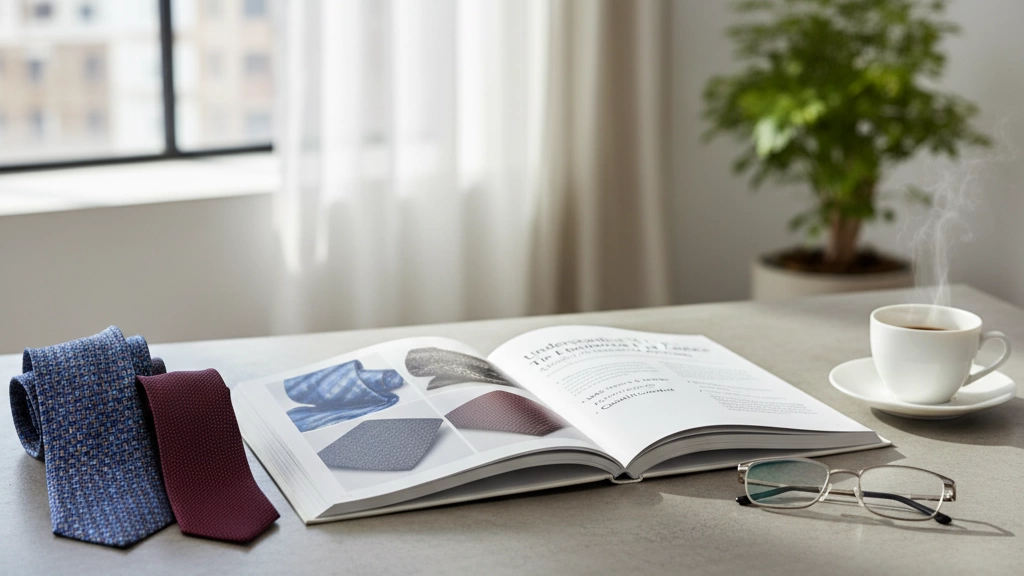Rule #1 – Match Your Metals (The Classic Guideline)
Traditionally, the rule was simple: stick to one metal type—gold with gold, silver with silver, rose gold with rose gold. This classic guideline keeps your look clean and cohesive. Why? Because matching metals create harmony, especially if you’re new to jewelry layering or want a polished, timeless vibe. Think of it like wearing a suit—everything should complement each other seamlessly.
But here’s the twist: mixing metals is the new black! Celebs like Rihanna and Zendaya break this rule all the time, rocking gold and silver together like it’s a planned power move. Mixing metals can add dimension and an effortless cool factor to your look. Want to style gold and silver together without it looking like a clash? Try balancing delicate chains in gold with chunky silver rings or a rose gold bracelet combined with sleek silver earrings.
When to break it?
- When you’re aiming for a bold, modern look.
- If you love the contrast and want to make your accessories pop.
- When combining fine and costume jewelry for a unique, playful outfit.
So, are you ready to experiment with mixing metals and turn this “rule” into your style playground?
Rule #2 – The “Three-Piece Maximum” Myth and Safe Layering Formulas

You’ve probably heard the rule that you shouldn’t wear more than three pieces of jewelry at once. While it sounds neat, this “three-piece maximum” guideline is more myth than must-follow. Jewelry layering rules have evolved, giving you freedom to stack and mix pieces in ways that feel right for you.
Here are some safe layering formulas to guide you:
- 2-3 pieces: Perfect for a minimalist look—think a delicate necklace paired with a few rings.
- 4-6 pieces: A balanced, slightly bolder vibe with mixed textures and layering—like stacking bracelets with layered necklaces.
- Full maximalist: Go all out with multiple rings, chunky necklaces, statement bracelets, and earrings for a vibrant, fashion-forward look.
When to Break It – Events Where More Is More
Some occasions call for a full maximalist jewelry look. Big parties, fashion events, or creative photoshoots invite you to push beyond traditional limits. Mixing fine and costume jewelry, stacking rings, layering necklaces, and combining metals can create a dynamic, eye-catching effect that feels intentional and stylish.
Rule #3 – Balance Scale and Proportion: Visual Cheat Sheet
When pairing jewelry, size and proportion matter just as much as style. Big, chunky pieces need room to breathe, while delicate items can be layered densely without overwhelming your look. Here’s a simple way to balance your jewelry:
- Pair large statement pieces with smaller, simpler ones to keep the focus clear.
- Match the scale to your outfit and body size—bold jewelry suits larger frames or high-impact outfits, while dainty pieces work well for subtle or minimalist styles.
- Keep quantity proportional to size: if you’re wearing a big necklace, opt for smaller rings and earrings.
Think of your jewelry like parts of a whole picture—balancing scale and proportion prevents the look from feeling cluttered or mismatched. Use this visual cheat sheet as a guide:
| Jewelry Size | Works Best With | Pairing Tip |
|---|---|---|
| Large, bold pieces | Simple clothing, minimal extra gems | Keep other pieces small or none |
| Medium-sized pieces | Casual or semi-formal outfits | Layer 2-3 pieces for a polished look |
| Small, delicate pieces | Layered looks or minimalism | Mix multiple small pieces for texture |
This approach helps you stack rings, layer necklaces, or mix metals without overpowering your overall look.
Rule #4 – Match Jewelry to Your Outfit’s Formality & Color Palette
The classic rule says your jewelry should fit the vibe of your outfit. So, for formal events, think elegant pieces like delicate gold chains or subtle diamond studs. For casual days, simple and understated jewelry works best, blending smoothly with your clothes’ colors and textures.
Matching your jewelry’s color palette to your outfit helps everything look polished. For example:
- Warm tones (reds, oranges) pair well with gold.
- Cool tones (blues, greens) shine with silver or white gold.
- Neutral colors can handle either metal or even mixed metals.
When to Break It – Using Bold Jewelry to Elevate a Simple Jeans-and-Tee Look
Don’t be afraid to break this rule. A chunky statement necklace or bright, oversized earrings can instantly lift a basic jeans-and-tee combo, making it stylish and modern. Bold jewelry adds personality and can turn everyday casual into cool, showing off your taste without trying too hard.
Rule #5 – One Statement Piece at a Time (…Or Not)
Traditionally, the rule says to pick one statement piece—like a bold necklace or oversized earrings—and keep the rest simple. This keeps your look balanced and avoids overwhelming your outfit. It’s a safe bet when you’re unsure how to layer or don’t want your jewelry to compete for attention.
When to Break It – Double-Statement Looks That Work
Lately, mixing two statement pieces is totally on-trend and can look amazing when done right. Here’s how you can pull it off:
- Balance the scale: Pair a bold necklace with chunky but smaller earrings, so one isn’t overshadowing the other.
- Stick to a cohesive color palette: Match metals or keep your gemstones in the same tone to unify the look.
- Consider your outfit: Simple, solid colors work best to let your double-statement jewelry shine.
- Personality matters: If your style is maximalist, layering statement pieces like a chunky bracelet with a bright ring and statement necklace can work.
So the “one statement piece” rule isn’t set in stone. With attention to scale, color, and outfit, you can confidently wear double or even multiple statement pieces for a fresh, stylish look.
Rule #6 – Consider Your Personal Color Season & Undertone

Your personal color season and undertone play a big role in choosing jewelry that naturally enhances your look. For example, warm undertones usually pair well with gold, copper, and bronze, while cooler tones often shine with silver, white gold, or platinum. Matching metals to your undertone helps your jewelry complement your skin, making everything feel balanced and polished.
Breaking It for Fun – Wearing “Wrong” Metals as a Deliberate Contrast
That said, rules are meant to be broken. Sometimes wearing metals “against” your undertone creates bold contrast and adds a unique twist to your style. For instance:
- A cool skin tone rocking chunky gold rings adds warmth and unexpected edge.
- Warm undertones pulling off sleek silver hoop earrings for a modern, fresh vibe.
Rule #7 – Earrings Should Complement Face Shape & Hairstyle
Traditionally, earrings are chosen to balance your face shape and work with your hairstyle. For example, long, dangling earrings can lengthen round faces, while studs or small hoops often suit angular faces better. Your hairstyle also plays a role—big earrings pop more with pulled-back hair, while delicate studs work well with loose styles. This rule helps keep your look harmonious and flattering.
When to Break It – Trend-Driven Oversized Hoops on Petite Faces
The New Rules – Modern Pairing Principles That Replaced the Old Ones
Jewelry is evolving, and so are the pairing rules. The old, strict guidelines have given way to fresh, flexible principles that celebrate personal style and creativity. Here’s what’s trending now:
-
Mix Metals with Confidence: Forget the old “match gold with gold” rule. Combining gold, silver, rose gold, and even mixed-finish pieces is now a stylish, intentional look. It adds depth and personality.
-
Layer More Than Three Pieces: The “three-piece maximum” is out. Layering 4-6 pieces or going full maximalist with bold stacks and mixed textures is totally acceptable—just keep balance in mind.
-
Balance Over Rules: Instead of rigid matching, focus on scale and proportion. Pair chunky with delicate, long necklaces with short chokers, or bold rings with subtle bracelets to keep your look dynamic.
-
Statement Jewelry Can Share the Spotlight: Wearing a statement necklace and bold earrings together isn’t taboo anymore. The key is to make sure they complement, not compete.
-
Play with Personal Color and Style: Jewelry that doesn’t “match” your color season or undertone can work when used deliberately. It’s about fun and contrast rather than sticking to basics.
-
Consider Occasion and Outfit: Modern rules encourage mixing casual with formal. For example, elevating a simple jeans-and-tee with standout pieces breaks old formal matching ideas.
At the heart of modern jewelry pairing is one thing: express yourself without fear. Whether you’re mixing fine and costume jewelry or stacking rings and necklaces, the focus is on personal style over outdated “rules.” This mindset suits global fashion tastes, offering endless ways to craft your own unique look every day.
Occasion-Based Quick Reference Guides
Knowing what jewelry to wear for different occasions takes the guesswork out of styling. Here’s a quick guide to help you pair your pieces the right way every time:
Everyday Casual
- Keep it simple: small studs or hoops
- Minimal layering: 2-3 delicate necklaces or rings
- Mix fine and costume jewelry for a relaxed vibe
- Avoid heavy or overly flashy pieces
Office & Professional Settings
- Stick to matched metals or subtle mixed metals
- Classic pieces like a watch, modest necklace, and small earrings
- Layering limited to 2-4 pieces for a polished look
- Neutral tones and metals that complement your outfit’s color palette
Date Night & Evening Events
- Feel free to layer 4-6 pieces or try a bold statement necklace
- Mix metals stylishly for added interest
- Opt for balance with one or two standout pieces
- Play with personal color season jewelry to enhance your glow
Formal & Black-Tie
- Go for matched metals or a sleek mix with a clear style goal
- Minimalist layering with 2-3 high-quality statement pieces
- Balance scale and proportion: statement earrings or necklace, not both
- Stick close to your outfit’s formal color palette
Festival & Maximalist Looks
- Break all the rules: mix metals, stack rings, layer multiple necklaces
- Maximalist jewelry look—more is more!
- Mix fine and costume jewelry boldly
- Play with bold colors and oversized pieces for impact
With these quick hacks, you can match your jewelry confidently to any occasion—and know when to stick to classic rules or break them for fun.
Common Jewelry Pairing Mistakes (And Easy Fixes)
Even with the best intentions, it’s easy to slip up when pairing jewelry. Here are some common mistakes and how to fix them quickly:
-
Wearing too many statement pieces at once
Fix: Stick to one bold item or balance strong pieces with something minimal to avoid a crowded look.
-
Mixing metals randomly without a plan
Fix: Try intentional mixing by choosing a dominant metal and adding subtle accents of another, like gold and silver together.
-
Ignoring scale and proportion
Fix: Use the visual cheat sheet approach—pair larger pieces with simpler ones to balance your look.
-
Forgetting your outfit’s formality
Fix: Match your jewelry style to the occasion or intentionally break it up by adding bold pieces to casual wear for an edge.
-
Overloading on layers without considering harmony
Fix: Follow safe layering formulas—like 2-3 rings or 4-6 mixed pieces—to keep your look cohesive.
-
Not considering face shape or hairstyle with earrings
Fix: Choose earrings that flatter your face or hairstyle, but don’t be afraid to try trendy oversized hoops if you want to make a statement.
-
Wearing jewelry that clashes with your color undertone
Fix: Know your personal color season but feel free to experiment by mixing “wrong” metals for contrast.
Fix these common errors, and your jewelry will always complement your style with confidence and flair.
How to Build Your Own Signature Jewelry Formula
Creating your own signature jewelry formula means finding what feels right and looks great for you every day. Here’s a simple way to build it:
-
Start with your basics: Choose a couple of go-to pieces you love, like a delicate gold necklace or classic hoop earrings. These should fit your personal color season and metal preference but don’t be afraid to experiment.
-
Consider your lifestyle: Pick jewelry that matches what you do daily. If you work in a casual environment, mix fine and costume jewelry for versatility. For formal settings, lean towards refined pieces.
-
Play with layering: Use necklace layering rules or ring stacking ideas to add dimension without going overboard. A safe start: 2-3 necklaces or 3 stacked rings, then adjust depending on your mood or event.
-
Balance statement and minimal: Decide if you want one statement piece or to mix a couple. Your signature look can be minimal or maximalist depending on how you feel and what suits your style.
-
Mix metals confidently: Even if the rule says match your metals, try combining gold and silver together or mixing fine and costume jewelry to see what works for you.
-
Adapt by season and trends: Update your formula based on personal color season jewelry tips, current jewelry rules 2025, or trending pieces like oversized hoops.
-
Test and adjust: Wear your picks regularly and notice what feels comfortable and gets compliments. Over time, tweak your formula to keep it fresh and true to your style.


